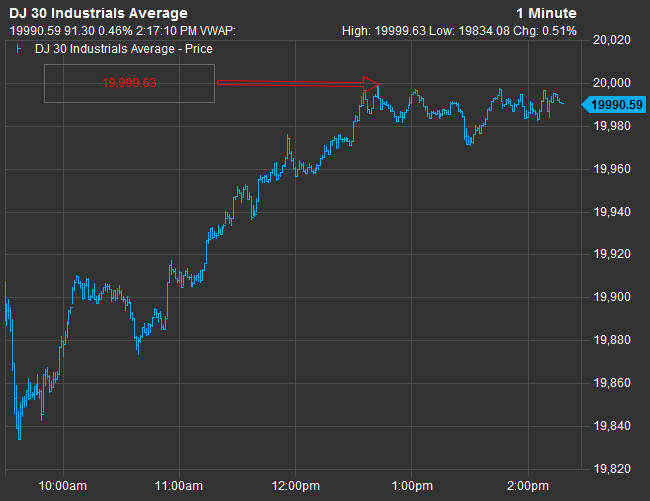Here's how close the Dow really came to striking 20,000
The Dow Jones industrial average (Dow Jones Global Indexes: .DJI) came within 0.37 points of reaching 20,000 on Friday, but that doesn't tell the whole story.
In order to obtain that remaining fraction of a point, any Dow component would have needed to rise by just five cents at that time. A five-cent move is equivalent to a 0.02 percent move in Goldman Sachs (GS), the highest-priced Dow stock, or a 0.18 percent move in Cisco Systems (CSCO), the lowest-priced component. The Dow would have also reached 20,000 if five Dow stocks would have gained 1 cent each at that point.
At 12:43 p.m. ET, the Dow hit 19,999.63 and continued flirting with the milestone throughout the afternoon.
Dow intraday chart

Source: FactSet
More From CNBC
Top News and Analysis
Latest News Video
Personal Finance

 Yahoo Finance
Yahoo Finance 
